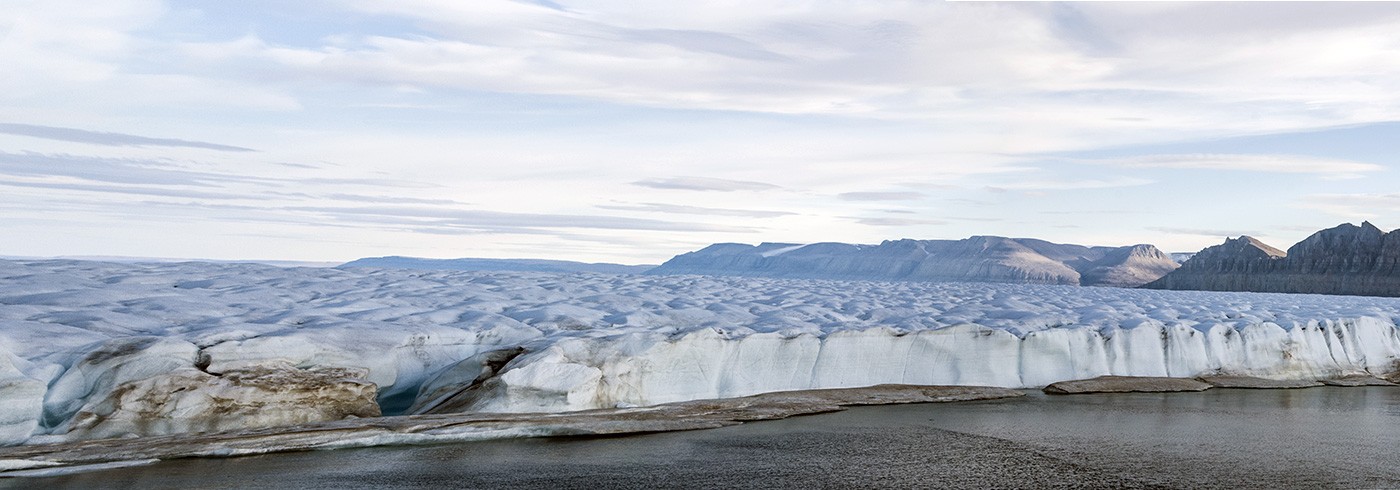After two nights in Kangerlussuaq I think we know the town. But we certainly do not know the amazing surrounding nature! It is rather spectacular, specifically close to the nearby glacier that contains an ice stream that transports ice from the Greenland Ice Sheet to the ocean. There is an approximately 25 km long road from Kangerlussuaq to this glacier. It was built by Volkswagen because they needed a remote dirt road to test their cars. This road also makes it possible to bike all the way to the glacier, a dream for geologists, such as myself, who get a kick out of watching how landforms are produced by an active glacier. The glacier does not end up in the ocean since it has retreated up on land. It means that no icebergs are produced from this glacier. Instead, it loses mass in the summer time by melting. Meltwater is flowing from the glacier and forms a river system that passes Kangerlussuaq before ending in the ocean. There is an enormous amount of sediment carried by the meltwater which makes the water color vary a lot. Sometimes a melt pond can be turquoise while nearby flowing water can be brown.
Muskoxen are very common around here. This is clearly seen on the local menus of the two only existing restaurants in Kangerlussuaq. My first dinner here was a muskox burger, actually not bad at all.
The second morning after we arrived it was time to move on and fly with an American C130 to Thule, little less than three hours long. Before we left I checked the latest satellite images of the Petermann Glacier area. Not quite as good as we had hoped for. The sea ice break-up in Nares Strait is at least one week delayed compared to the most recent years. There is a quite dense clog of sea ice in the lower part of the strait which we will have to break through if nothing changes over the next upcoming days. The wind has been from south so sea ice have been pushed back up into the Nares Strait instead of draining out to face a certain death through melting in Baffin Bay. Once we get to Nares Strait, we will see how close the satellite images reveal the true nature of the sea ice!
Martin Jakobsson, Stockholm University





